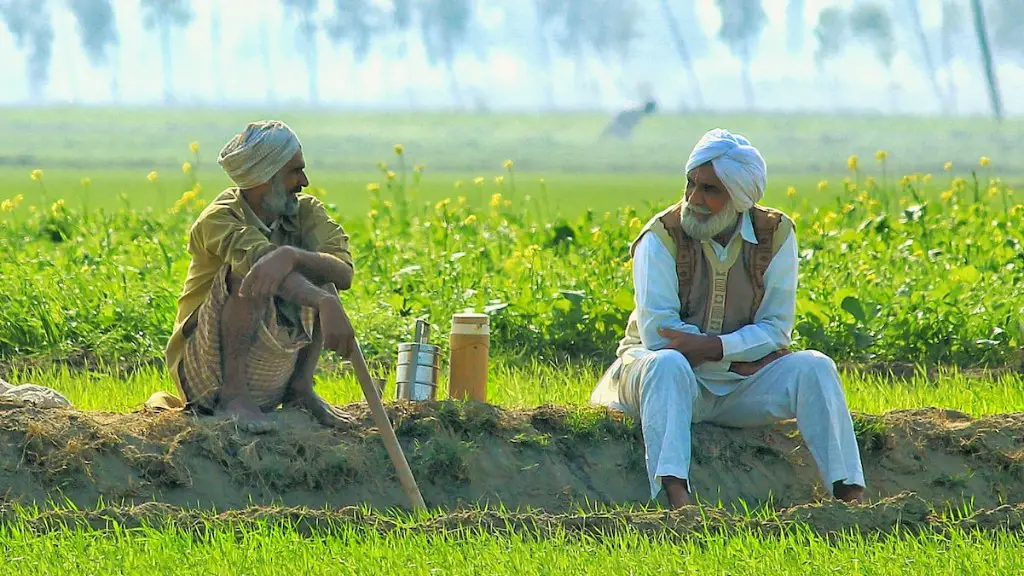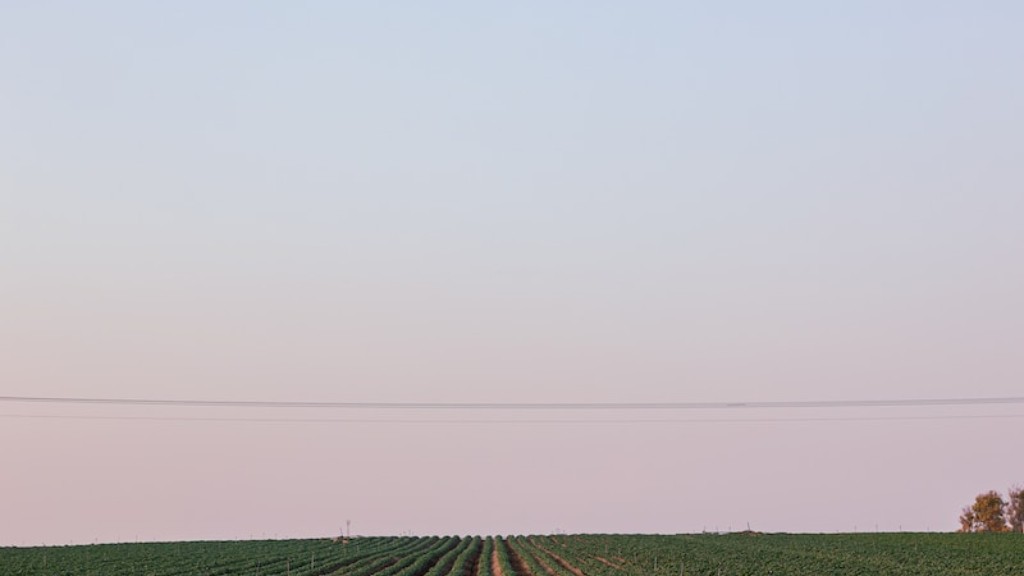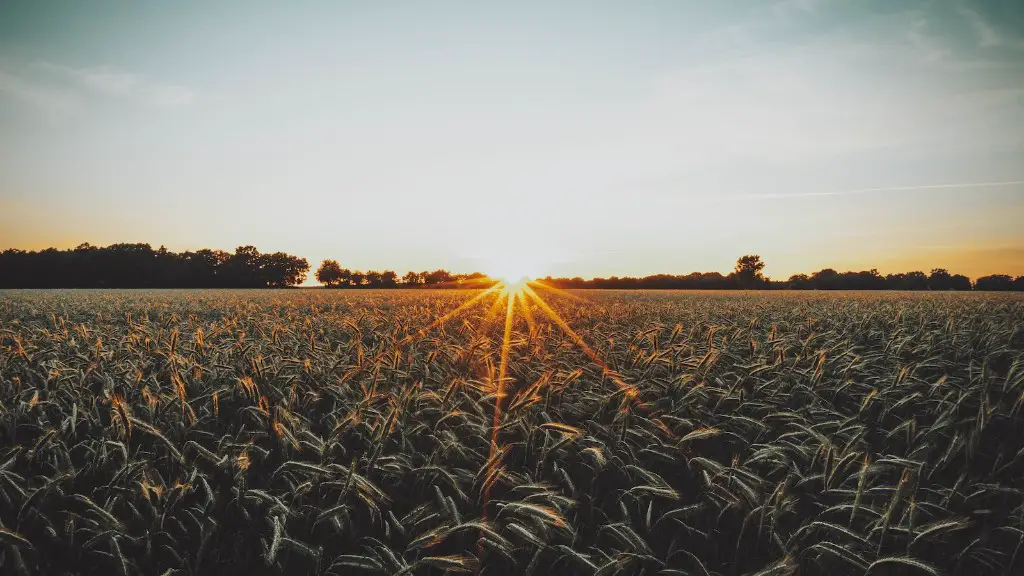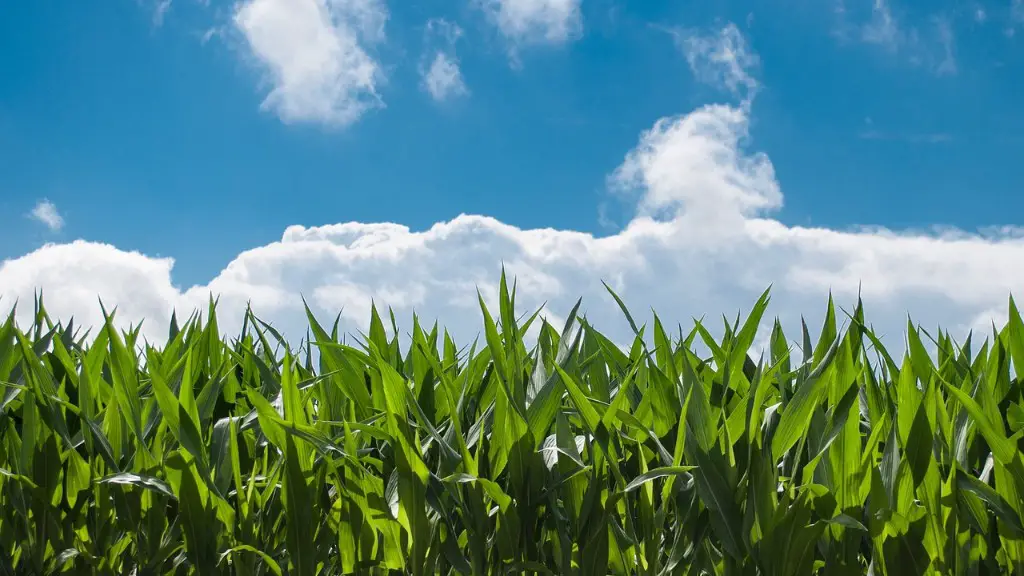The origins of agriculture date back to the Neolithic era, about 10,000 years ago. Agriculture began independently in different parts of the world, and there is still debate about which region was the first to adopt this crucial technology. Evidence suggests that early farming practices were based on a combination of animal husbandry, horticulture, and scavenging. Over time, these methods evolved and became more sophisticated, leading to the development of complex civilizations that were based on agricultural production.
The exact date of when agriculture began is unknown, but it is believed to have started around 10,000-12,000 years ago. Agriculture allowed for the domestication of plants and animals, which led to the development of civilizations.
Where did agriculture first begin?
The Fertile Crescent was a naturally fertile region with ample rainfall and ample sunlight. The first farmers in the Fertile Crescent learned to cultivate the land and to irrigate their crops. They also learned to breed animals for food and to use them for ploughing and transportation.
The Fertile Crescent was the birthplace of agriculture, and it was from here that farming spread to other parts of the world.
The Egyptians were among the first people to practice agriculture on a large scale. They started in the pre-dynastic period from the end of the Paleolithic into the Neolithic, between around 10,000 BC and 4000 BC. This was made possible with the development of basin irrigation.
When did agriculture begin and end
Agriculture likely began during the Neolithic Era before roughly 9000 BCE when polished stone tools were developed and the last ice age ended. Historians have several theories about why many societies switched from hunting and foraging to settled agriculture. One theory is that the shift was due to changes in the climate. As the ice age came to an end, the climate became warmer and more forgiving, making it easier to grow crops. Another theory suggests that the shift was due to the development of new technologies, like irrigation and crop rotation. Whatever the reason, the switch to agriculture changed the way humans lived and allowed for the development of civilizations.
Humans began to invent agriculture between 7,000 and 10,000 years ago during the Neolithic era, or the New Stone Age. There were eight Neolithic crops: emmer wheat, einkorn wheat, peas, lentils, bitter vetch, hulled barley, chickpeas, and flax. These crops allowed humans to settle in one place and develop civilizations. Agriculture allowed for the growth of cities and the development of technology and culture.
When did agriculture start in America?
Agriculture is thought to have originated independently in both North and South America ∼10,000 years before present (YBP), within a few thousand years of the arrival of humans in the Americas. Agriculture allowed for the domestication of plants and animals, which led to the development of civilizations in both regions. The exact date and location of the first agricultural settlements in the Americas is unknown, but it is thought that they arose independently from each other.
Early humans found that wheat and barley were easy to grow and provided a good source of food. These crops were some of the first to be cultivated, and they have remained an important part of the human diet ever since.
What is the oldest crop?
Lentils have played a significant role in human history for over 13,000 years. Today, we enjoy them in delicious stews, soups, and salads. However, in ancient times, lentils were a key ingredient in the establishment of modern societies. By providing a nutritious and hearty source of food, lentils helped spur the development of civilizations around the world. From the earliest farmers to the mighty Roman Empire, lentils have helped shape the course of human history.
When the climate of the world was changing, people observed places where edible plants like seeds, plants, etc were found. They started growing their own plants and thus became farmers.
Who started to grow crops first
The first crops grown in the Sulaiman and Kirthar hills were wheat and barley. These crops were grown about 8000 years ago by men and women who first began to settle in the area. The hills provided a good location for farming due to their fertile soils and ample rainfall. The wheat and barley crops flourished in the hills and soon became the mainstay of the local economy. The farmers of the Sulaiman and Kirthar hills have continued to grow these crops for thousands of years, and they remain an important part of the region’s culture and heritage.
The Neolithic Revolution was a time period that saw the development of agriculture and the domestication of animals. This period began around 7000 BC in Mehrgarh, modern day Pakistan. Wheat, sesame, barley, and eggplant were cultivated during this time. Cattle and chicken were also domesticated. This period saw the development of rice domestication in southeast Asia and the evidence of cattle domestication in Turkey.
What is the history about agriculture?
Farming began in the predynastic period at the end of the Paleolithic, after 10,000 BC. Staple food crops were grains such as wheat and barley, alongside industrial crops such as flax and papyrus. In India, wheat, barley and jujube were domesticated by 9,000 BC, soon followed by sheep and goats.
However, a new study has found evidence that farming may have begun much earlier, as early as 23,000 years ago, in a region known as the southeastern Balkans. The study, which was published in the journal Nature, suggests that the first farmers in this region were using a primitive form of wheat to make a type of flatbread.
This is an interesting finding, as it suggests that farming may have originated in a different region than was previously thought. It also raises questions about the early history of the Balkans and the people who lived there.
Who is first in agriculture in the world
Although China has a relatively small amount of arable land, they are still able to feed a significant portion of the world’s population. This is due to the fact that they utilize their land very efficiently and are able to produce a large amount of food per acre. Additionally, the Chinese government has been investing heavily in agriculture in recent years, which has further contributed to their ability to feed so many people.
Climate change and overhunting are two major reasons why humans began to practice agriculture. As the climate changed, it became too cold or too dry to rely on wild food sources. Overhunting also pushed the extinction of some well-known species, and animals around them. This led to a shortage of food, which forced humans to settle down and begin farming.
Where did farming first start in America?
It is believed that agriculture arose independently in at least three regions: South America, Mesoamerica, and eastern North America. Each of these regions has its own uniquehistory and climate, which likely played a role in the development of agriculture. For example, the Inca Empire in South America developed a system of terraces and irrigation canals to support agriculture, while Mesoamerican civilizations such as the Maya and Aztec created complex systems of agriculture that included Chinampas (artificial islands made from reeds). In North America, the Hopi people developed a dry-farming technique known as the “slash-and-burn” method, which allowed them to cultivate crops in the desert.
The agricultural economy in the United States was the primary source of livelihood for the majority of the population through the early 19th century. The transition to an industrial economy began in the late 18th century, and took more than a century to complete. This transition had a profound impact on the social and economic fabric of the nation.
The industrial economy was characterized by a dramatic increase in productivity, made possible by advances in technology and the application of scientific principles to manufacturing. This increase in productivity led to a decrease in the relative importance of agriculture, and an increase in the importance of industry. The industrial economy also resulted in a more urbanized population, as people flocked to cities in search of employment in factories.
The industrial economy had a profound impact on the social structure of the United States. The increase in productivity led to a rise in living standards for the majority of Americans. However, it also resulted in economic inequality, as a small number of Americans amassed great wealth while many others remained in poverty.
The transition from an agricultural to an industrial economy was a long and complex process that had a profound impact on the United States. This transition fundamentally changed the social and economic fabric of the nation.
Conclusion
The history of agriculture is long and complicated, but in general, it is believed that agriculture began around 10,000 BC. This is when people began to domesticate plants and animals, and to use them for food. Agriculture allowed people to settle down in one place, and it allowed for the development of civilizations.
While there is evidence of early humans using wild plants for food, the true origins of agriculture are still unknown. It is thought that agriculture began independently in different parts of the world at different times. Agriculture allowed for the domestication of plants and animals, which led to the development of civilizations. Today, agriculture is a vital part of the global food system, providing sustenance for billions of people.





